Summary
- Spherical mirrors
- Three principal rays
- Mirror equation
POP5 26.25
An 8-cm thick flint glass plate (n = 1.66) is covered by 12 cm of water. How thick does it appear
from above the water?
A. 1.66 cm
B. 2.41 cm
C. 4.82 cm
D. 5.34 cm
Answer
SB5 36.25
If a goldfish is 10.0 cm from the wall of a 15.0-cm-radius spherical fishbowl, how far from the wall does
it appear to an outside observer?
A. 9.01 cm
B. 10.0 cm
C. 7.33 cm
D. 12.5 cm
Answer
Knight2 23.stt.06
The image of a slide on a screen is blurry because the screen is in front of the image plane.
To focus the image, should you move the lens toward the slide or away from the slide?
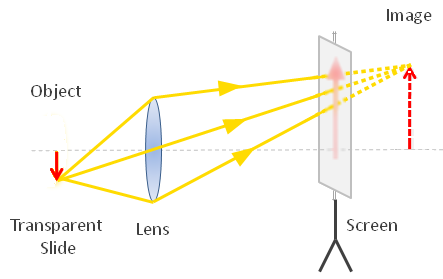
A. toward
B. away
Answer
POP5 26.37
The nickel's image in the figure has twice the diameter of the nickel and is 3.36 cm from the lens.
What is the focal length of the lens?
A. 7.24 cm
B. 6.72 cm
C. 4.82 cm
D. 3.36 cm
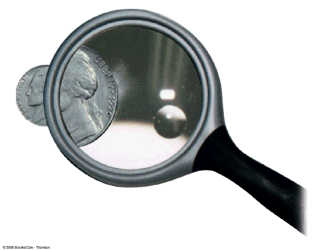 Answer
Answer
POP5 26.35
A single thin lens is to project the real image of a 24.0-mm-high slide so that it fills a screen that is
1.80 m high. If the slide-to-screen distance is 3.00 m, what is the focal length of the appropriate lens?
A. −75 cm
B. +3.90 cm
C. +75.0 cm
D. +296 cm
Answer
POP5 26.54
An object is positioned L = 2.00 m from a screen. A converging lens is used to make a real image of
the object on the screen from two different locations that are separated by d = 89.4 cm. What is the
focal length of the lens?
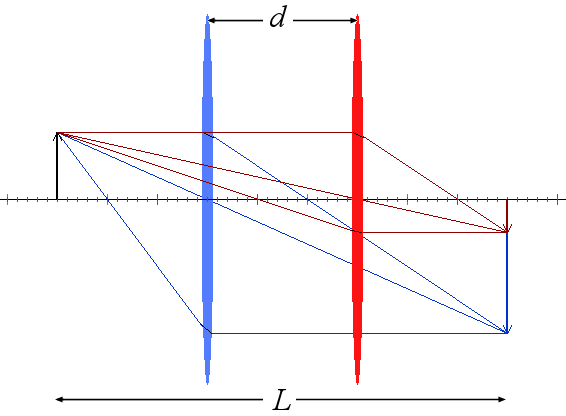
A. 4.47 cm
B. 25.0 cm
C. 40.0 cm
D. 80.0 cm
Answer
Walker5e 26.55
A coin is lying at the bottom of a pool of water that is 1.8 m deep. When viewed from directly above, how far below the surface of the water does the coin appear to be?
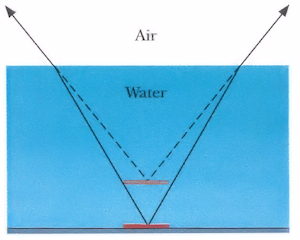
A. 0.45 m
B. 1.35 m
C. 1.80 m
D. 2.40 m
Answer
Walker5e CnEx 26-17
If a converging lens is immersed in water instead of air, does its focal length increase, decrease, or stay the same?
A. increase
B. decrease
C. stay the same
Answer
Walker5e EYU 26.6
The lenses shown below have objects that are identical in size and location relative to the lens. Is the image produced by lens 1 larger than, smaller than, or the same size as the image formed by lens 2?
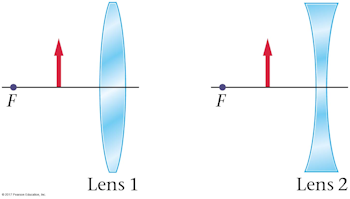
A. larger than
B. smaller than
C. the same size as
Answer
C. 4.82 cm
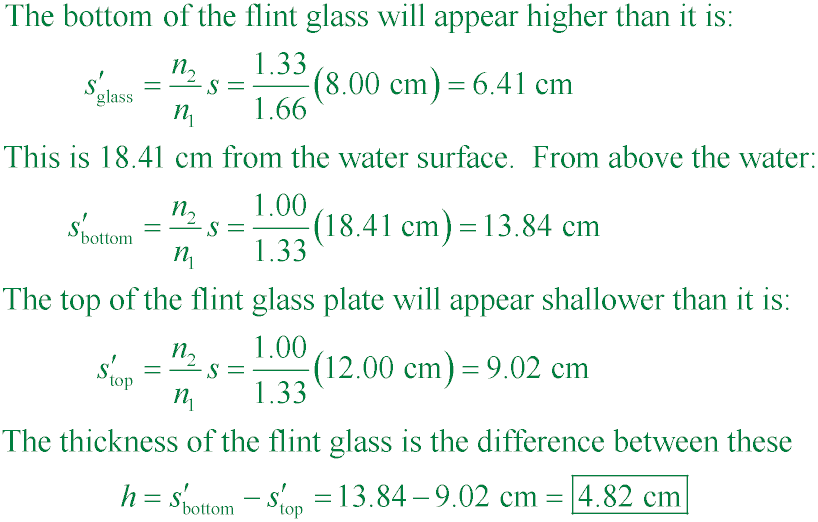
A. 9.01 cm
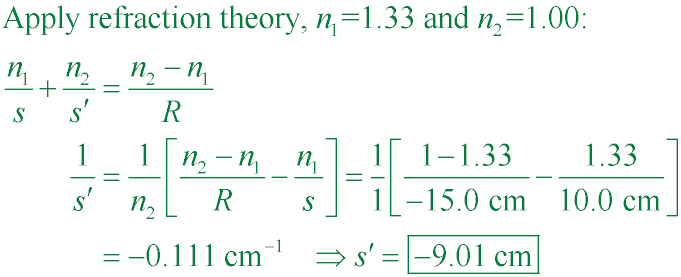
B. away
There is an inverse relationship between object and image
distances. In this case, in order to decrease the image distance so that it falls on the
screen, we must increase the object distance. That means moving the lens away from the object
(the slide).
D. 3.36 cm
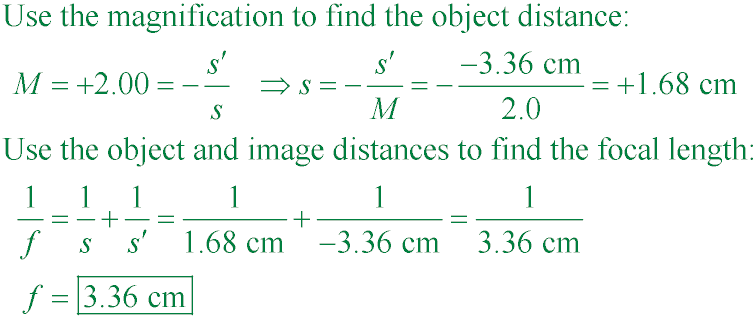
B. +3.90 cm
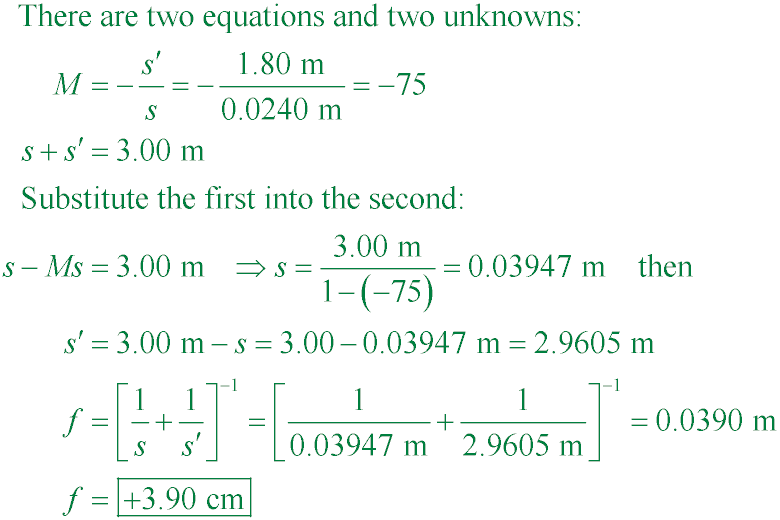
C. 40.0 cm

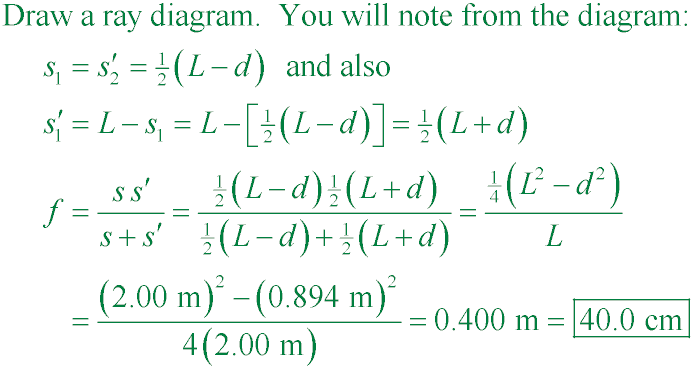
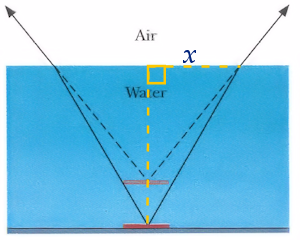
B. 1.35 m
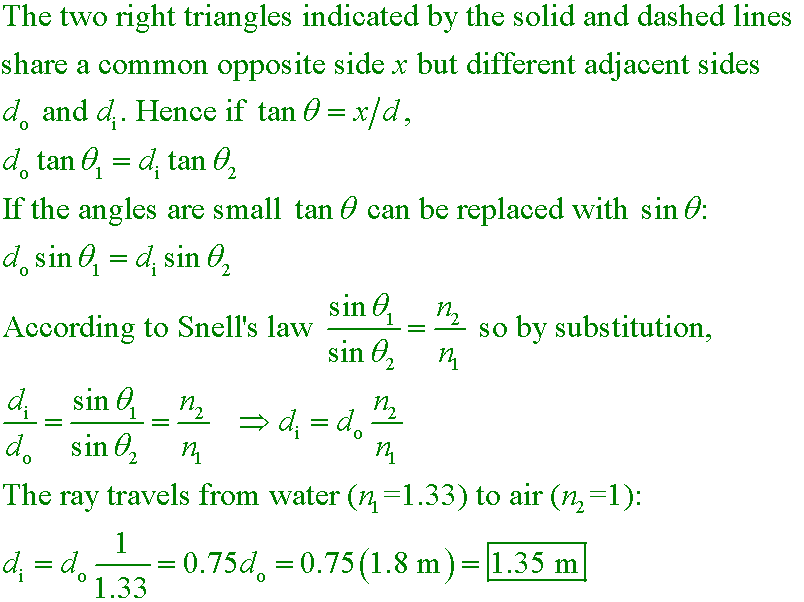
Refraction makes the image of the coin appear shallower than it is by a factor of nair/nwater = 1/1.33 = 3/4.

A. increase
There is a smaller difference of index of refraction between water and glass than between air and glass. As a result, the light rays bend less at each boundary and the focal length of the lens becomes longer.

A. larger than
The image produced by lens 1 will be virtual, upright, and magnified. The image produced by lens 2 will be virtual, upright, and reduced.
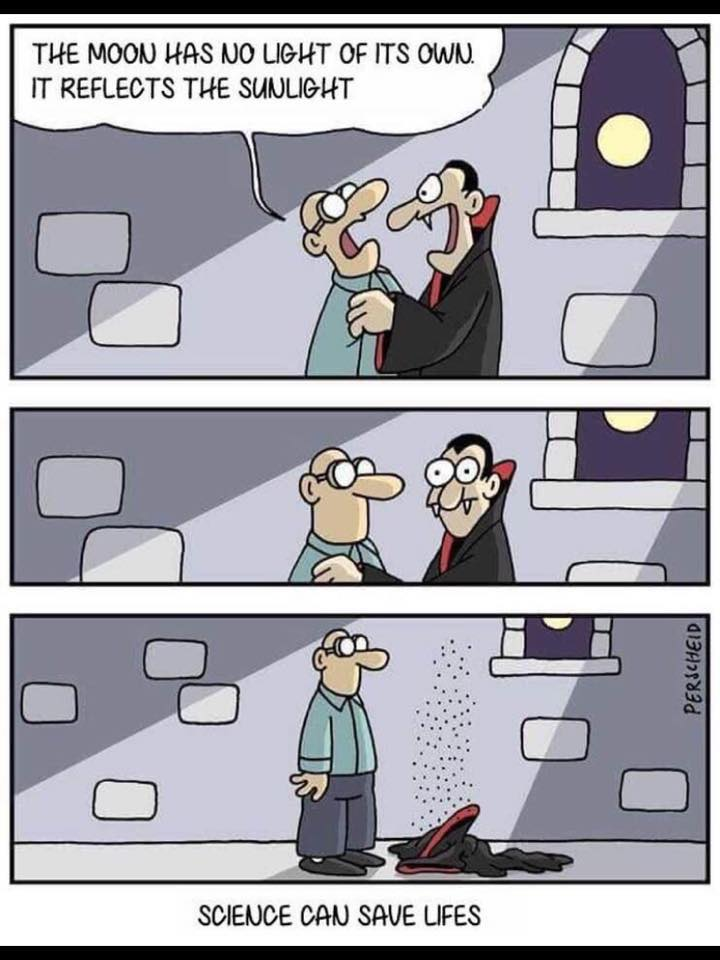
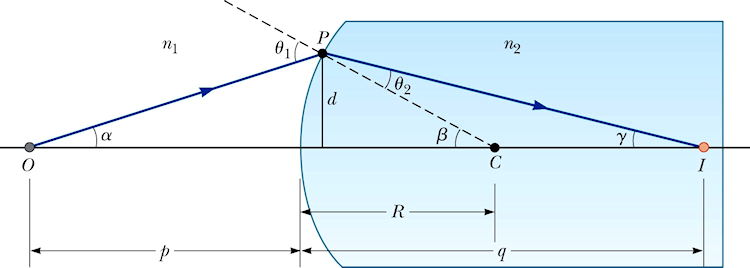

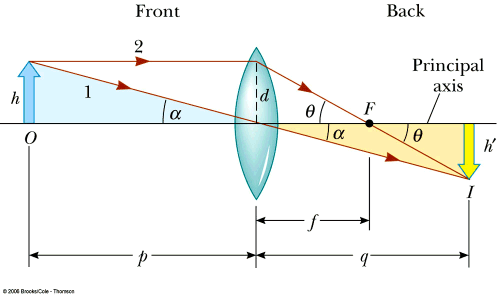
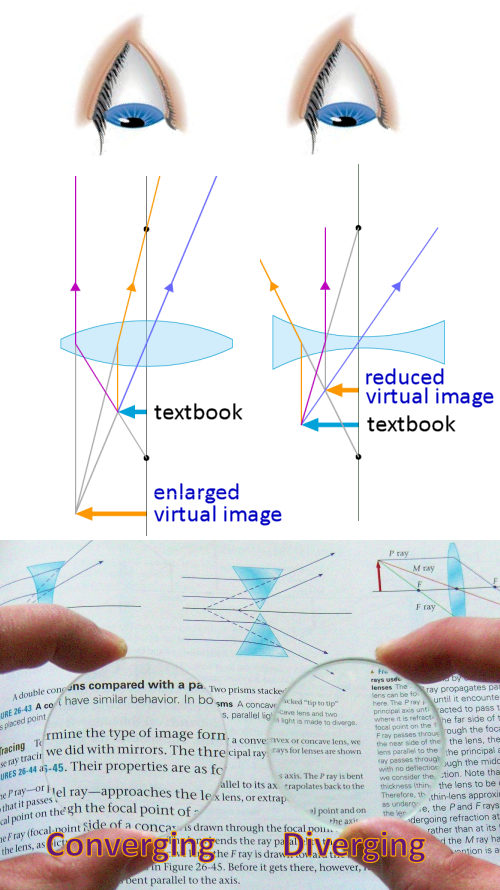

 Answer
Answer












